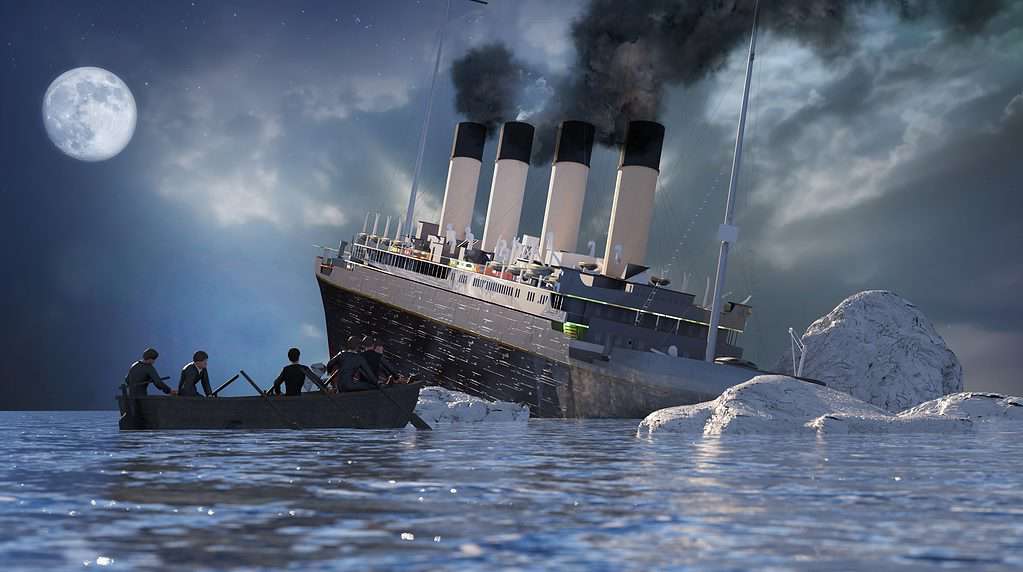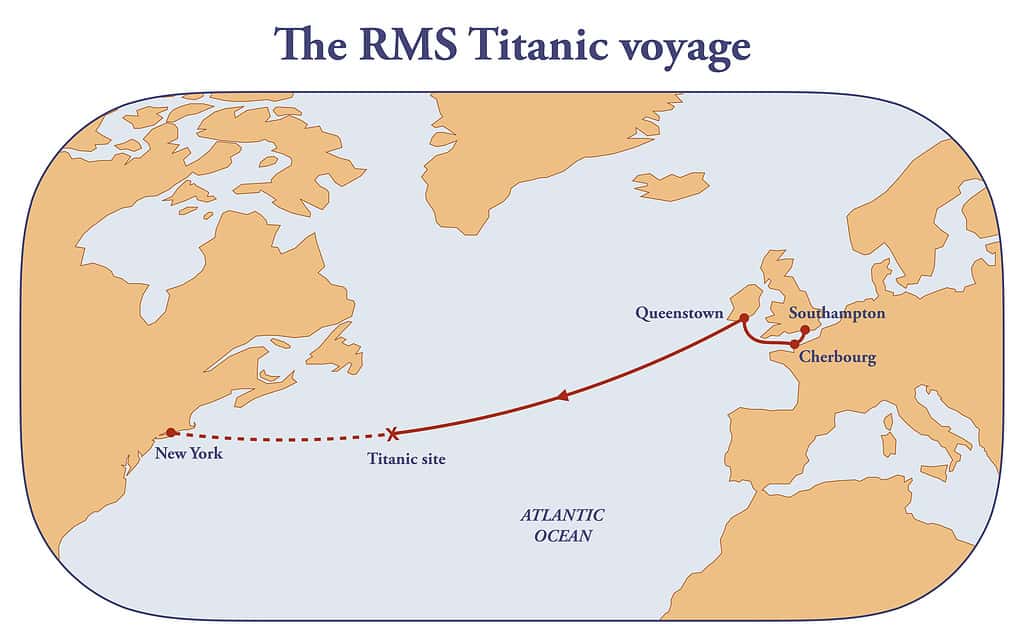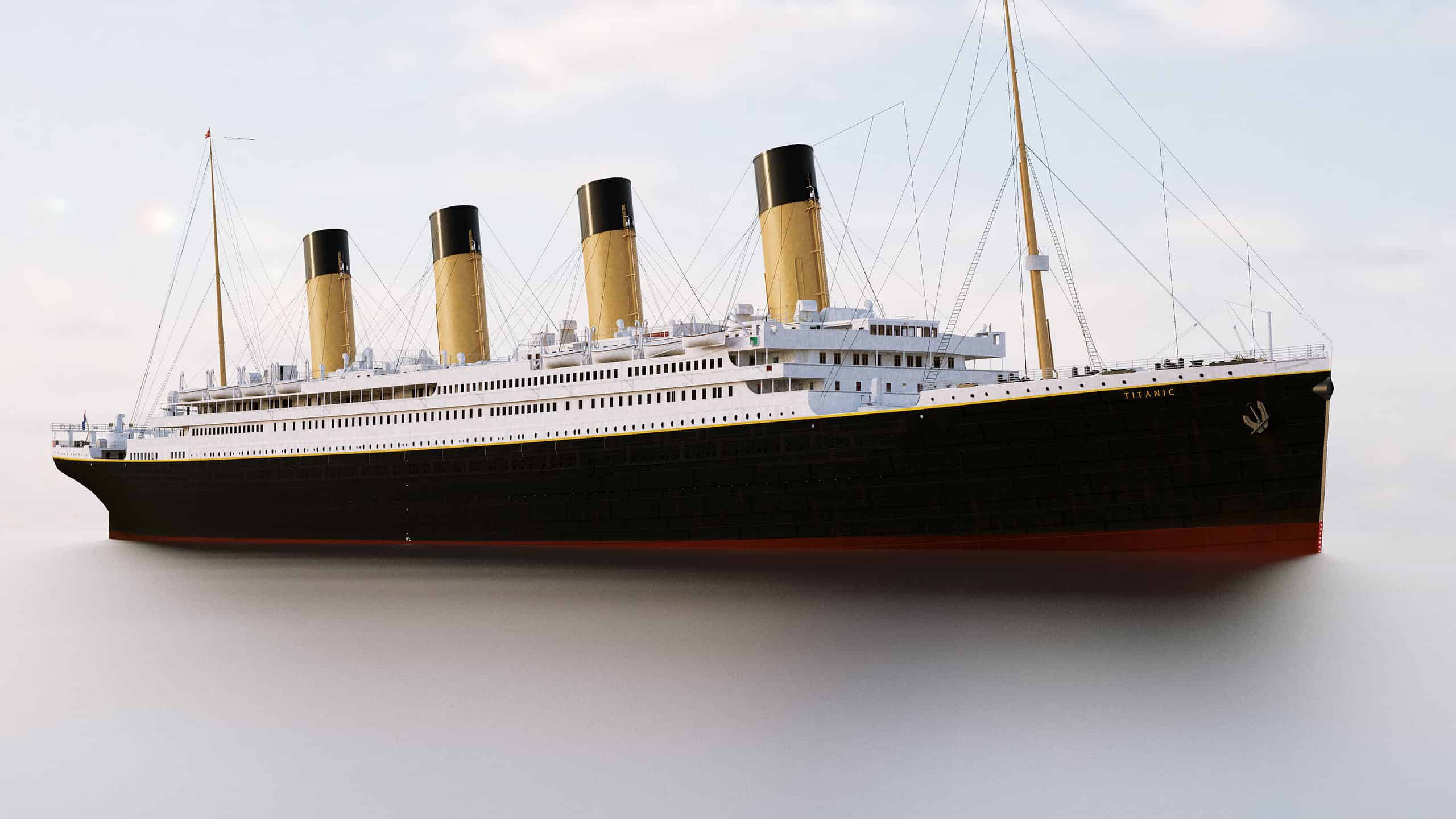The Titanic is arguably the most famous ship in the world. But it’s more famous because it sank than the ship itself. The Titanic was advertised as the safest ship in the world. The White Star Line, who was the owner of the ship, claimed it to be an unsinkable ship. Of course, there is no such thing as an unsinkable ship. Even the strongest of vessels are vulnerable to the torrential seas. As the owners, crew, and passengers unfortunately learned that fateful night, the ocean waters are not to be messed with.
The Titanic was on its maiden voyage when it struck an iceberg in April 1912. It sank hours later, plunging into the depths of the Atlantic Ocean. No other ship was nearby in time to save most of the passengers. When the Carpathia, the nearest ship available, arrived, they discovered that more than 1,500 people had perished and only about 700 survived. It was one of the worst maritime disasters in world history.
There have been many books, series, and movies about the “unsinkable” Titanic. The stories told are of the passengers, rich and poor, who survived or died. Of those who died, they either went down with the ship or died in the near-freezing waters of the Atlantic. But how cold was the water? The answer will chill you.
Let’s take a look at how cold the water was when the Titanic sank. We’ll also include some tidbits on the Atlantic Ocean, the wildlife that lives near the Titanic’s resting place, and other fun facts about the fated ship.
How Cold Was the Water?

There were three classes in the accommodations on the Titanic and the 700 third-class passengers had to share two bathtubs.
©Denis—S/Shutterstock.com
The water stood at 28 degrees Fahrenheit when the Titanic plunged underwater. When the water is that cold, objects become weak. When the ship struck the iceberg on that fateful night, it spelled doom for the ship. The Titanic would sink. The iceberg hit in a way that damaged the hull immensely. But that’s not all, the water’s temperature also affects the steel and it becomes weaker, thus accelerating the sinking.
How Does the Temperature Affect the Body?
There is no doubt that water temperature affects the body’s ability to survive. If the ship had sunk off in another ocean where the waters would have been warmer, then things may have been different. But no, this happened on April 14, 1912, and the weather conditions were horrid. Passengers and crew alike needed to have overcoats to keep warm. This also affected the Titanic’s survival rate.
Depending on the temperature and the time, a human being can survive in the cold water. If the water temperature is between 40-50 degrees Fahrenheit, humans can survive up to three hours in the water. That time is cut in half once the water temperature decreases to 32.5 degrees Fahrenheit. The Atlantic’s freezing waters were a chilling 28 degrees, so that means the ill-fated voyageurs would not even survive 30 minutes.
What Do Cold Water Temperatures Do to the Body?

Captain Edward J. Smith had been a captain for decades and the Titanic’s maiden voyage would be his last before retiring.
©Dimitrios Karamitros/iStock via Getty Images
So we know that the water that fateful night was 28 degrees Fahrenheit. We know that humans cannot survive past thirty minutes in those icy waters. But what happens to the human body in that time frame? Humans can develop hypothermia.
Symptoms humans can get with hypothermia are stiffness of the muscles, intense shivering, unordinary confusion, drowsiness, and slurred speech. Humans can also experience cold shock because of the rapid swing in skin temperature. You can experience chest pain, panic, increased heart rate, and intense breathing, among other symptoms.
The odds were not in the voyageurs’ favor that fateful night. The minute the Titanic plunged into the water, the people struggling to swim and survive would perish. It was only a matter of time.
Wildlife Near the Titanic

The Atlantic Ocean was covered in icebergs on that fateful night in 1912.
©Kertu/Shutterstock.com
The Atlantic Ocean is home to an abundance of wildlife. You can find a few species of whales, dolphins, sharks, sea turtles, orcas, and many more animals. But if you go 12,000 feet into the abyss, you’ll find an assortment of creatures that will make you drop your jaw in shock. Marine worms are crawling about, there are also crustaceans, a few fish, and the bacteria that has been eating away at the ship for more than 100 years.
The scariest creature swimming throughout the ship is the Abyssobrotula galatheae, a somewhat transparent eel that eats all the other creatures slithering about. But there are also giant sea spiders roaming about and hunting for prey.
History and Maiden Voyage

When the Titanic was built, it was the biggest ship in the world, measuring three football fields.
©Robert John Welch (1859-1936), official photographer for Harland & Wolff / public domain – Original / License
Construction started on the Titanic in 1909 when White Star Line, the shipmaking owners, approved the designs. It took two years to build and it was ready to be fitted in the interior. The ship was completely ready on April 6, 1912. The ship smelled new and when passengers arrived to board, they were in awe at the gigantic size. It was the largest ship in the world and White Star Line executives claimed it was unsinkable. The Titanic had fewer lifeboats because the people at the top wanted to make it fancier for the super-rich that would take the voyage from England to New York.
The Titanic departed from Southampton, England on Wednesday, April 10, 1912. It made two stops in Cherbourg, France, and Queenstown, Ireland, before sailing across the Atlantic. There were approximately 1,317 passengers and about 885 crew members including Captain Edward J. Smith. At around 11:40 p.m. on April 14, 1912, the Titanic struck an iceberg. The ship sank rapidly, as the crew scrambled to load women and children on lifeboats. Two and a half hours later, at approximately 2:20 a.m., the Titanic finally submerged into the ocean. It wasn’t until around 4 a.m. that the Carpathia arrived to rescue the stranded passengers. It was too late for others, as they had gone down with the ship or frozen to death in the chilling ocean. About 1,500 souls perished that day and only about 700 survived.
Conclusion
And there you have it, the water when the Titanic sank was extremely cold. It was so cold that almost everyone died in less than an hour. Only five people were rescued from the hundreds that were in the water. People of all ages perished that day, from babies to eighty-year-olds. The learned lesson for this historical event is that safety always comes first. After 1912, governments started forth with regulations for maritime vessels, which included having more lifeboats, requiring that drills take place, and other safety procedures.
Ships were made to become safer than before and ensured that people needn’t worry about possible sinkings. Of course, they still happened but less frequently. In the case of the Titanic, it has gone down as one of the most famous ships in the world. The event spurred many movies, including Titanic, directed by James Cameron and starring Kate Winslet and Leonardo DiCaprio. Titanic went on to win the most Academy Awards of any movie.
At the end of the day, the Titanic intrigues us. We find everything about the fateful voyage fascinating. More than a hundred years later people still want to see the wreckage of it, sometimes to their demise, as well. The Titanic may be at the bottom of the ocean, but in our minds, it’s still unsinkable.
Thank you for reading! Have some feedback for us? Contact the AZ Animals editorial team.








